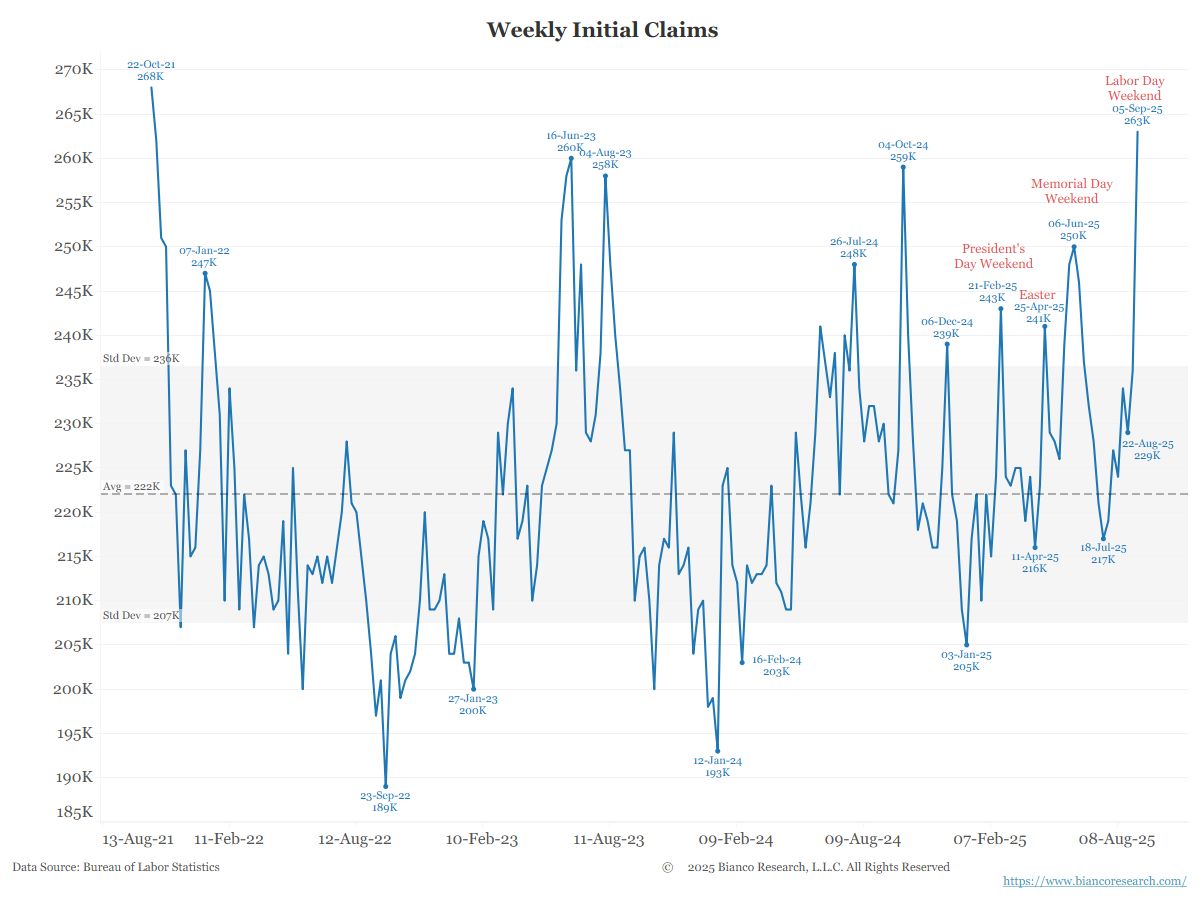First Britain, and now the US. As we see increasing evidence that governments have borrowed too much, bond markets are beginning to rebel against the prospects of even more debt. Here’s Bloomberg:
A Bloomberg index shows liquidity in the Treasury market is worse now than during the early days of the pandemic and the lockdowns, when no one knew what to expect. . . .
What should be most concerning to the Fed and the Treasury Department is deteriorating demand at US debt auctions. A key measure called the bid-to-cover ratio at the government’s offering Wednesday of $32 billion in benchmark 10-year notes was more than one standard deviation below the average for the last year, according to Bloomberg News. Demand from indirect bidders, generally seen as a proxy for foreign demand, was the lowest since March 2021, data compiled by Bloomberg show. Although the Treasury is in no jeopardy of suffering a “failed auction,” lower demand means the government is paying more to borrow.
All this is coming as Bloomberg News reports that the biggest, most powerful buyers of Treasuries – from Japanese pensions and life insurers to foreign governments and US commercial banks – are all pulling back at the same time. “We need to find a new marginal buyer of Treasuries as central banks and banks overall are exiting stage left,” Glen Capelo, who spent more than three decades on Wall Street bond-trading desks and is now a managing director at Mischler Financial, told Bloomberg News.
I opposed German fiscal stimulus at a time when most pundits were demanding that Germany do more. Even before Covid, I called America’s fiscal policy “reckless”. When Covid hit, our pundits were falling all over themselves demanding ever more fiscal stimulus.
Our public debt is now over 100% of GDP. If you raise interest costs on that debt from 1% to 4.5%, you’ve added an interest expense equivalent to the entire military budget. Yes, it doesn’t happen all at once (due to some long-term bonds), but this is the direction we are headed.
Here’s what I said in March 2020:
We are now seeing renewed calls for fiscal stimulus. This is a terrible idea. . . .
Instead of blindly throwing money at the problem, we need a smart response to the coronavirus epidemic. It would contain the following components:
1. An immediate shift by the Fed to level targeting, combined with a commitment by the Fed to buy whatever it takes (of any asset necessary) to quickly return to its price level (or NGDP) target path after the immediate crisis is over.
2. Fiscal programs strictly targeted to meet humanitarian needs, such as extending the unemployment compensation program beyond 26 weeks if the coronavirus epidemic lasts for more than 26 weeks. Perhaps the weekly payments could also be boosted during this crisis, as the “moral hazard problem” is secondary for the immediate future. Extra spending should be paid for with a higher payroll tax on upper income salaries.
Fiscal policy over the past few years has been perhaps the most reckless in all of American history, with an exploding budget deficit even as unemployment falls to 3.5%. The budget deficit is already over a trillion dollars; we certainly don’t need more deficit spending right now.
We are beginning to pay the price for the past 4 years of reckless borrowing under the Trump/Biden regime. Now do you see why I favor monetary stimulus over fiscal stimulus? And why NGDP level targeting is so important?
Debt may seem free when interest rates are near zero, but rates don’t stay near zero forever.
PS. It’s not all Covid. Here is the CBO projection from 2019. (The subsequent reality was far worse.) Notice how the deficit worsened during the peacetime boom of the late 2010s. That’s never supposed to happen. (Both political parties were largely silent. President Trump got away with a Liz Truss fiscal policy because our debt was much smaller at the time.)
















